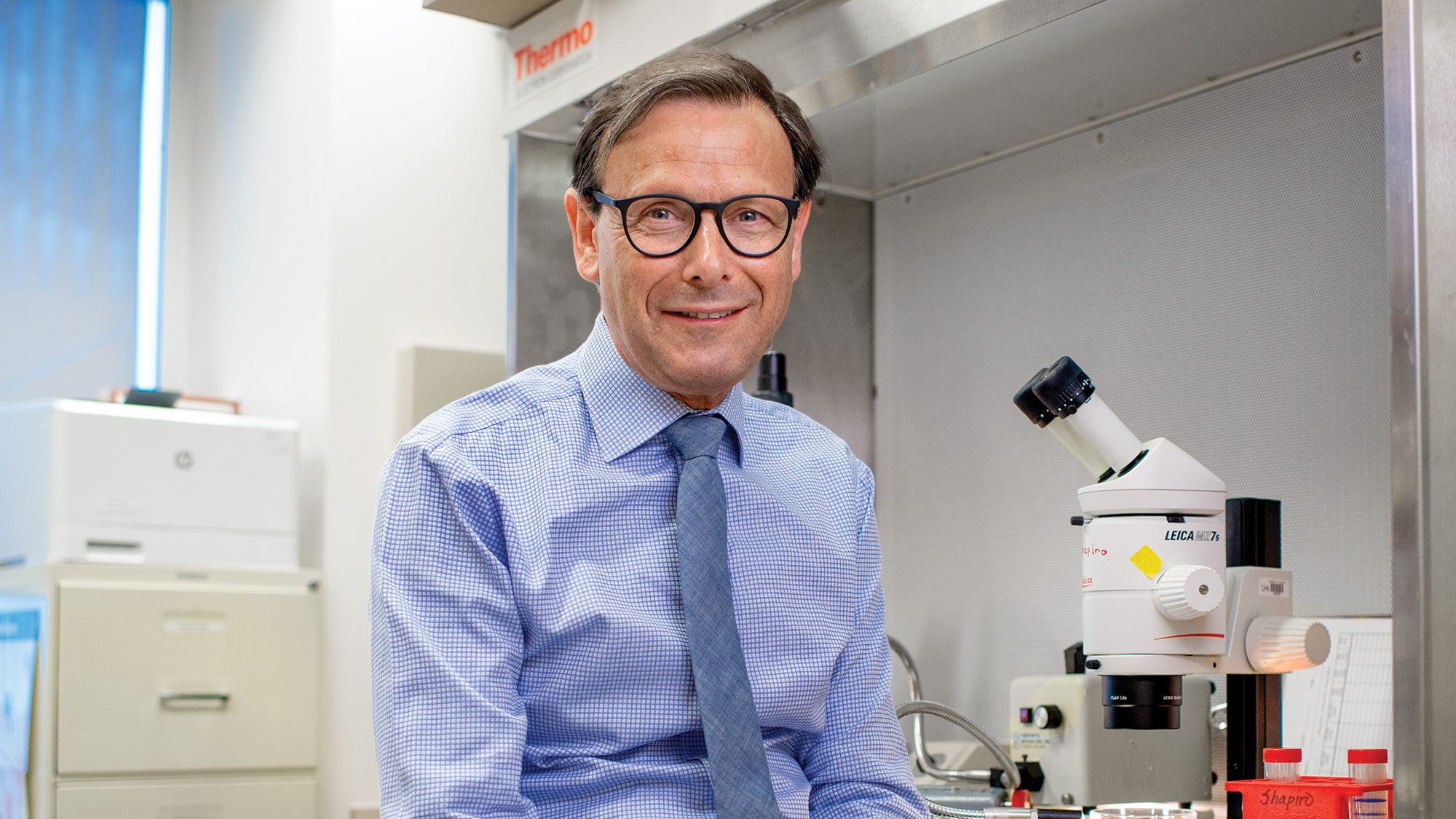Our bodies are amazing things, but when it comes to fighting disease, we often benefit from scientific help. For over 20 years, AMA member Dr. James Shapiro and the team at the University of Alberta’s Diabetes Institute have been transplanting islet cells to allow patients to temporarily suspend insulin injections. Recently, though, the team has focused on harnessing patients’ own cells to potentially cure diabetes.
As a child, Shapiro would spend his Saturday mornings at his father’s medical practice in Leeds, England. Perched on a swivel chair, he marvelled at the glass cabinet of surgical instruments. As a young man, he started to use them—while scrubbing in for his father’s surgeon friend. “I still remember those operations,” he says. “I knew then that I wanted to become a surgeon.”
But surgical programs were highly competitive; prospective students participated in research to increase their chances. Shapiro was drawn to a project at the University of Newcastle covering islet cell transplants in rats. “I had never touched a rat before and scarcely knew anything about diabetes or islet cells,” he recalls. “My early experiments all failed, but I was left with a bug to chase down this research, and I never let it go.”
The pursuit brought him to the University of Alberta in the early 1990s, where he trained with Dr. Norm Kneteman, founder of the school’s liver transplant program, and Dr. Ray Rajotte, head of islet cells research. The trio began harvesting insulin-producing islet cells and transplanting them into the livers of Type 1 diabetes patients, who were then able to come off insulin. Dubbed the “Edmonton Protocol,” the treatment was internationally praised.
MORE TO READ
A rallying cry for organ donation in Alberta
A lack of organs, however, proved a major obstacle. Up to three donor organs were often needed for the procedure—an unsustainable number, given the world’s 450 million-plus diabetics. And while patients no longer relied on insulin, they did have to take anti-rejection drugs, which came with a long list of side effects.
Needing an unlimited source of cells, Shapiro’s team now looks to the patients themselves. Researchers extract cells from a diabetic’s own blood. Using a technique developed by a Nobel-winning Japanese scientist, they “reset” the cells so they’re effectively brand new. Over 27 days, the cells undergo a process that turns them into insulin-producing islet cells.
Because the cells are from the patient’s own body, no anti-rejection drugs are needed, and often just one dose is necessary for the cells to start producing insulin. In trials with mice, the technique has effectively cured diabetes.
MORE TO READ
How an Edmonton couple supports their community with socks
Human trials are the next step, but they will require more equipment, technology and money.
That’s where the fundraising initiative HEADing to 2022 comes in. To move research forward, organizers hope to encourage one million Canadians to each donate $22—for a total of $22 million. It’s a lot of money, but it’s nothing compared to the $1.3 trillion a year it costs to manage diabetes worldwide.
“Every six seconds, one person dies of complications from diabetes,” Shapiro says. “We need a better approach and I believe the cell transplant approach will get us there. The day that happens I will cry with joy.”
